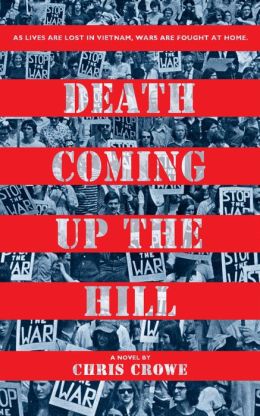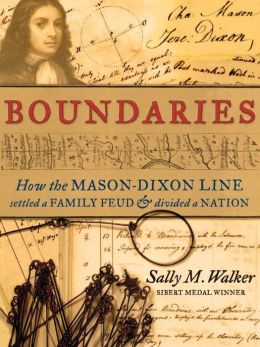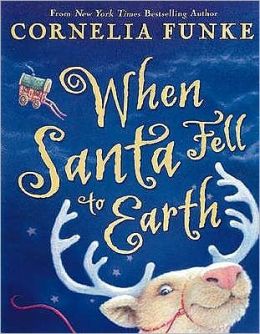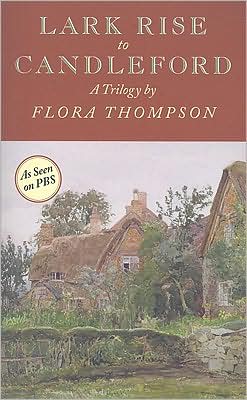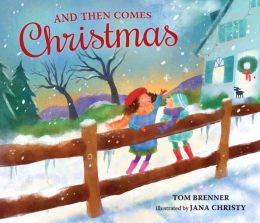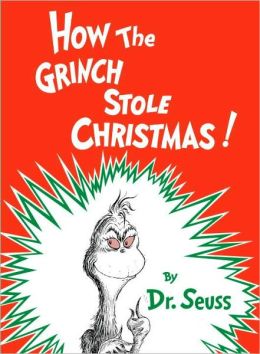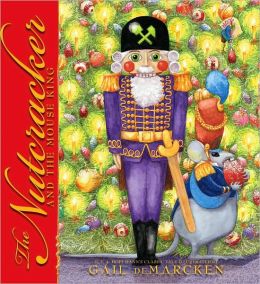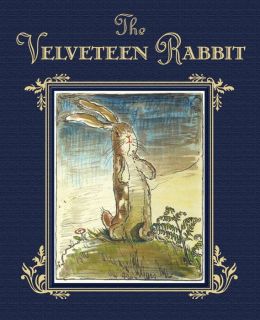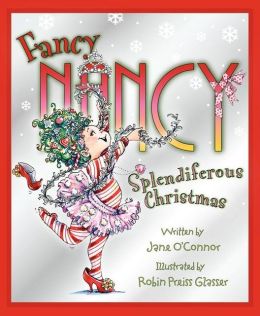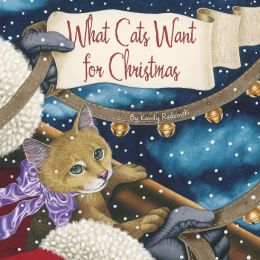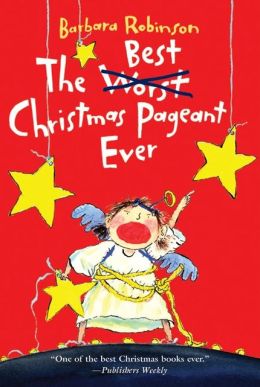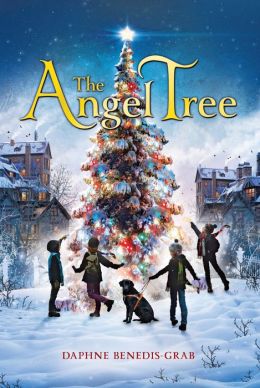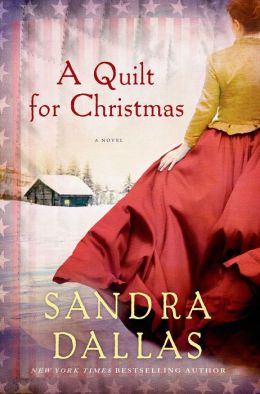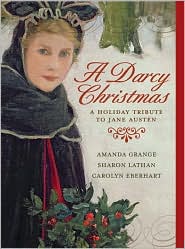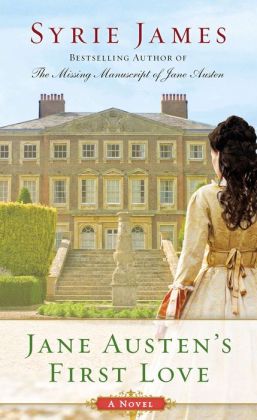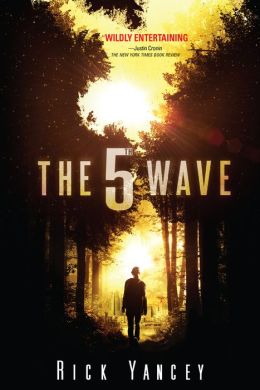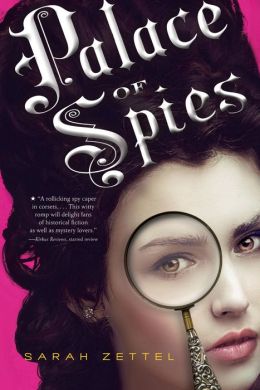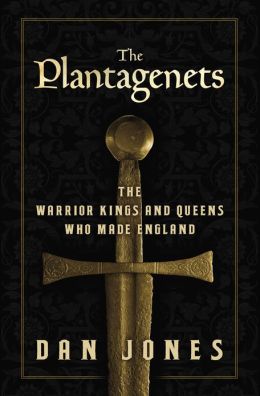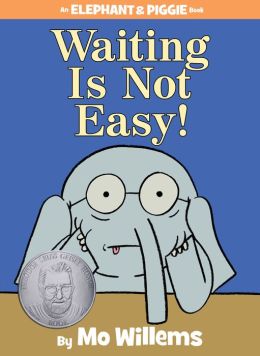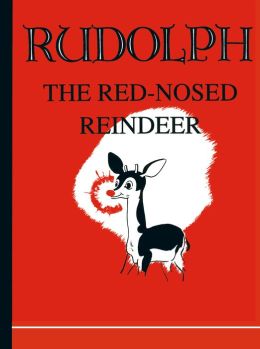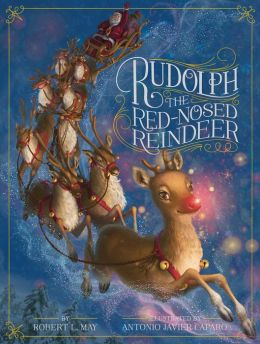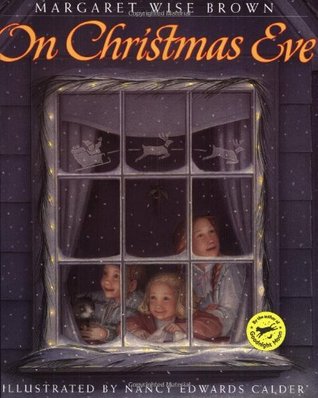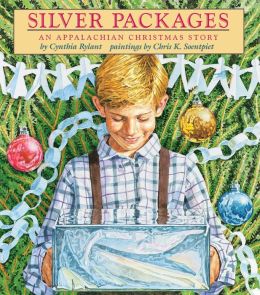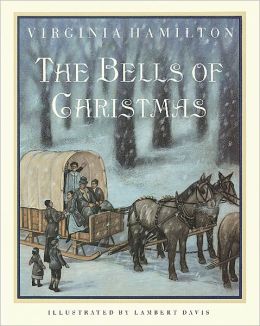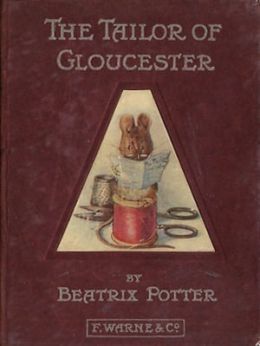new posts in all blogs
Viewing: Blog Posts Tagged with: books reviewed in 2014, Most Recent at Top [Help]
Results 1 - 25 of 279
How to use this Page
You are viewing the most recent posts tagged with the words: books reviewed in 2014 in the JacketFlap blog reader. What is a tag? Think of a tag as a keyword or category label. Tags can both help you find posts on JacketFlap.com as well as provide an easy way for you to "remember" and classify posts for later recall. Try adding a tag yourself by clicking "Add a tag" below a post's header. Scroll down through the list of Recent Posts in the left column and click on a post title that sounds interesting. You can view all posts from a specific blog by clicking the Blog name in the right column, or you can click a 'More Posts from this Blog' link in any individual post.

By:
Becky Laney,
on 12/31/2014
Blog:
Becky's Book Reviews
(
Login to Add to MyJacketFlap)
JacketFlap tags:
books reviewed in 2014,
J Fiction,
J Fantasy,
ghosts,
2014,
Houghton Mifflin Harcourt,
MG Fiction,
library book,
MG Fantasy,
Add a tag
Greenglass House. Kate Milford. 2014. Houghton Mifflin Harcourt. 384 pages. [Source: Library]
I had very high expectations for Kate Milford's Greenglass House. I loved, loved, LOVED Kate Milford's The Boneshaker. My love for that one hasn't faded a bit since I first read it. (I've reread it at least once or twice since.) Greenglass House is one that I've been looking forward to reading for most of the year. Almost a book I NEEDED to read instead of merely being one I wanted to read. And the opening paragraph was wonderful:
There is a right way to do things and a wrong way, if you're going to run a hotel in a smugglers' town. You shouldn't make it a habit to ask too many questions, for one thing. And you probably shouldn't be in it for the money. Smugglers are always going to be flush with cash as soon as they find a buyer for the eight cartons of fountain pen cartridges that write in illegal shades of green, but they never have money today. You should, if you are going to run a smugglers' hotel, get a big account book and assume that whatever you write in it, the reality is, you're going to get paid in fountain pen cartridges. If you're lucky. You could just as easily get paid with something even more useless. Milo Pine did not run a smugglers' hotel, but his parents did.Unfortunately, for me, the book proved disappointing. However, just because it was an almost for me does not mean that it would prove equally disappointing to other readers. I think it could definitely work for other readers. In fact, the very elements that annoyed me may be what another reader loves best of all about the book.
For a book set during the Christmas holidays, this is a very un-Christmas-y book. Christmas proves to be the last thing on every character's mind. So if you pick up the book thinking, A Christmas book! A Christmas mystery! How delightful! You may be disappointed.
Greenglass House is very much a mystery. It is a puzzle-solving mystery. It is a book that celebrates brainstorming. Milo, our hero, finds a map. He doesn't know anything at all about the map. Just that one of the new guests must have dropped it--either on purpose or by accident--on his/her way into the inn. Perhaps he first becomes curious out of boredom or frustration. It is the holidays. The inn never has--that he can recall--had guests over the winter holidays. So when three or four guests appear within an hour or two of each other, he's annoyed. Guests mean work. If not work for him directly, then work for his parents. And the guests range from slightly eccentric to VERY eccentric.
Greenglass Mystery is more than a mystery. I can't talk about it without spoiling it, however.
So what annoyed me most about the Greenglass House? The game-playing. The introduction of the role-playing game in order to solve the mystery at the inn. All the details--big and small--that come from the game. Including the names. Most of the book, the characters use their game-names (personas) instead of their real names.
There are also elements of a coming-of-age story within Greenglass House. Milo is adopted. He's Chinese. His parents are white. He thinks about being adopted a lot. Plus, I think he's just at that age where one questions their identity and who they are and why they are and what they want to be and where they fit and how they fit.
© 2014 Becky Laney of
Becky's Book Reviews
Death Coming Up The Hill. Chris Crowe. 2014. HMH. 208 pages. [Source: Review copy]
At first I was skeptical about Death Coming Up the Hill. A whole verse novel written in haiku?! I struggle with liking verse novels in general. When I do, it is more often an exception than the norm. Why haiku? Why a verse novel? But after reading the author's note, I was a bit more forgiving and appreciative. He shares why he chose to write in haiku. He says he tried writing the story in prose, he tried different things here and there. He liked the characters. He liked the story. But the words, they were stuck. When he tried writing in verse, in haiku, things became unstuck. Furthermore, the number of syllables in Death Coming Up the Hill matches precisely the number of American soldiers killed in Vietnam in 1968. So the author's note did explain the why. That being said, I haven't changed my mind about verse novels.
Death Coming Up the Hill is a coming-of-age love story set in 1968. Ashe is the protagonist. 1968 will bring him joy and sorrow. I'll start with the joy: the new girl in school, Angela Turner, will become his girl; they'll fall madly in love. She will support him. He will support her. Together they have something solid. A further joy, of sorts, is Ashe will get a baby sister, Rosa. Now for the sorrow, Rosa is not his father's child. His mom has had an affair. His parents will split up, and Ashe's family life will go from uncomfortable to unbearable. Plus, there's general angst. Angst about the war in Vietnam. Angst at home in the U.S. His father is at one extreme, his mother at the other. Ashe is growing up and deciding who he is, what he believes, what he wants and needs, what he's willing to do or not do.
As a coming of age novel, it works. As a love story, it works. So in many ways this one works. I personally don't think it's great in terms of poetry and language. But I will be the first to admit that I don't read much poetry, and, that poetry in general is subjective enough to begin with. Do I think that the novel resonates with emotion? Yes. But I don't think it resonates with emotion because of the poetry.
© 2014 Becky Laney of
Becky's Book Reviews
Boundaries. Sally M. Walker. 2014. Candlewick. 208 pages. [Source: Review copy]
While American history is not my favorite subject, I did enjoy various aspects of Boundaries: How The Mason-Dixon Line Settled A Family Feud and Divided a Nation. I can appreciate the thoroughness of the research and the organization of the narrative.
It's a broad subject. The book begins in England and follows two men who established colonies in the New World. One man, a Catholic, the second man, a Quaker. One would establish Maryland, the other would establish Pennsylvania. It follows those two families for a chapter or two pointing out the disputes and troubles regarding the border or boundary between the two colonies. It points out that there were regions that BOTH claimed and that BOTH tried to tax settlers. So one governing body could say pay taxes to me, not them. Readers could see how residents could find it frustrating and confusing. Most of the book, however, is about two men, two scientists: Charles Mason and Jeremiah Dixon. It goes into great detail about HOW the two men surveyed the land, walked the three lines to establish boundaries. It is very science-y, very technical. It shares details about their work, their crews, their journeys, their guides, etc. This project lasted several years. One chapter focuses on the Mason-Dixon line as symbol of free states and slave states, a division of North and South. That chapter discusses about two hundred years worth of history. The last chapter is an odd one. It brings the Mason-Dixon line into contemporary times; it speaks of the men and women who have taken an interest in it, have taken an interest in the boundary stones, who have set off on a quest to find the original markers, or, who have worked to get historical markers for the region in various locations.
I found this one to be a bit dry in places.
© 2014 Becky Laney of
Becky's Book Reviews
The Case of the Postponed Murder. Erle Stanley Gardner. 1973. 152 pages. [Source: Bought]
I enjoyed reading The Case of the Postponed Murder. Is it the best mystery ever? OF course not. I wouldn't even say it is the best Perry Mason mystery that I've ever read. But is it worth the quick time it takes? I think so. If you love the characters Perry Mason, Paul Drake, and Della Street, then you'll most likely enjoy reading this one enough.
The mystery begins with a woman visiting Mason's office. The would-be-client is concerned about her sister whom she claims is missing. Mason doesn't trust the woman, he thinks she's lying, or telling half-truths at least. He does direct her to hire Paul Drake as a private detective. Mason's hunch is that the sister story is flawed. His best guest is that "Sylvia Farr" the oh-so-concerned sister is in fact Mae Farr the so-called missing sister. His suspicions are confirmed a few days later, but, by then he's too involved in the case. It starts out a forgery case, an alleged check-forgery case. But, of course, you may have guessed it, ends in a murder case. (Though this one doesn't have a very satisfying murder-trial element to it.) The book is predictable enough, but, I don't have a problem with predictable and Perry Mason.
The book does feel a bit dated, even for 1973. The client, Mae Farr, is determined to be independent and strong-willed. She wants to make her way through life on her own, earn her own money, pay her own way, take care of her own problems. Yet, by the conclusion, she's decided that maybe she was wrong to think she could do it all on her own in the big city, that it would be best for her to marry the rancher who's spent years of his life loving her from afar. You definitely get the sense that she's been tamed. I guess my concern with that is that she's spent the entire book saying that she didn't love him at all, that she didn't care for him, that she'd never be happy with him, that she had no desire at all to get married and settle down. And then, within two pages a complete change of heart.
© 2014 Becky Laney of
Becky's Book Reviews
Jane Eyre. Charlotte Bronte. 1847. 300 pages. [Source: Own]
There was no possibility of taking a walk that day.Can a plain, orphan governess find true love and a happily ever after? Yes, if she's willing to speak her own mind, stay true to herself, and fight for the one she loves. Jane's journey to her happily ever after certainly wasn't easy or typical.
I have many, many posts about Jane Eyre. But surprisingly, only two book reviews! I first reviewed it--for the blog--
in September 2008. My second review is
from December 2011.
In 2012, I reviewed ten film adaptations of Jane Eyre. Each film got its own review, but I then wrote up a
post analyzing them all.
It had been a few years since I'd last read Jane Eyre. After watching it so many times, I needed to take a break. But I knew that I would want to include the book in my year of rereading. It is just wonderful to revisit Jane Eyre again and again and again.
Do you love Jane Eyre too? Do you have a favorite scene? a least favorite scene? What is your favorite adaptation? What scenes do you find essential in an adaptation?
Some of my favorite quotes:
He had been looking two minutes at the fire, and I had been looking the same length of time at him, when, turning suddenly, he caught my gaze fastened on his physiognomy. “You examine me, Miss Eyre,” said he: “do you think me handsome?” I should, if I had deliberated, have replied to this question by something conventionally vague and polite; but the answer somehow slipped from my tongue before I was aware—“No, sir.” “Ah! By my word! there is something singular about you,” said he: “you have the air of a little nonnette; quaint, quiet, grave, and simple, as you sit with your hands before you, and your eyes generally bent on the carpet (except, by-the-bye, when they are directed piercingly to my face; as just now, for instance); and when one asks you a question, or makes a remark to which you are obliged to reply, you rap out a round rejoinder, which, if not blunt, is at least brusque. What do you mean by it?” “Sir, I was too plain; I beg your pardon. I ought to have replied that it was not easy to give an impromptu answer to a question about appearances; that tastes mostly differ; and that beauty is of little consequence, or something of that sort.” “You ought to have replied no such thing. Beauty of little consequence, indeed! And so, under pretence of softening the previous outrage, of stroking and soothing me into placidity, you stick a sly penknife under my ear! Go on: what fault do you find with me, pray? I suppose I have all my limbs and all my features like any other man?” “Mr. Rochester, allow me to disown my first answer: I intended no pointed repartee: it was only a blunder.” “Just so: I think so: and you shall be answerable for it. Criticise me: does my forehead not please you?” He lifted up the sable waves of hair which lay horizontally over his brow, and showed a solid enough mass of intellectual organs, but an abrupt deficiency where the suave sign of benevolence should have risen. “Now, ma’am, am I a fool?” “Far from it, sir. You would, perhaps, think me rude if I inquired in return whether you are a philanthropist?”
“You looked very much puzzled, Miss Eyre; and though you are not pretty any more than I am handsome, yet a puzzled air becomes you; besides, it is convenient, for it keeps those searching eyes of yours away from my physiognomy, and busies them with the worsted flowers of the rug; so puzzle on. Young lady, I am disposed to be gregarious and communicative to-night.” With this announcement he rose from his chair, and stood, leaning his arm on the marble mantelpiece: in that attitude his shape was seen plainly as well as his face; his unusual breadth of chest, disproportionate almost to his length of limb. I am sure most people would have thought him an ugly man; yet there was so much unconscious pride in his port; so much ease in his demeanour; such a look of complete indifference to his own external appearance; so haughty a reliance on the power of other qualities, intrinsic or adventitious, to atone for the lack of mere personal attractiveness, that, in looking at him, one inevitably shared the indifference, and, even in a blind, imperfect sense, put faith in the confidence. “I am disposed to be gregarious and communicative to-night,” he repeated, “and that is why I sent for you: the fire and the chandelier were not sufficient company for me; nor would Pilot have been, for none of these can talk. Adèle is a degree better, but still far below the mark; Mrs. Fairfax ditto; you, I am persuaded, can suit me if you will: you puzzled me the first evening I invited you down here. I have almost forgotten you since: other ideas have driven yours from my head; but to-night I am resolved to be at ease; to dismiss what importunes, and recall what pleases. It would please me now to draw you out—to learn more of you—therefore speak.” Instead of speaking, I smiled; and not a very complacent or submissive smile either. “Speak,” he urged. “What about, sir?” “Whatever you like. I leave both the choice of subject and the manner of treating it entirely to yourself.” Accordingly I sat and said nothing: “If he expects me to talk for the mere sake of talking and showing off, he will find he has addressed himself to the wrong person,” I thought. “You are dumb, Miss Eyre.” I was dumb still. He bent his head a little towards me, and with a single hasty glance seemed to dive into my eyes. “Stubborn?” he said, “and annoyed. Ah! it is consistent. I put my request in an absurd, almost insolent form. Miss Eyre, I beg your pardon. The fact is, once for all, I don’t wish to treat you like an inferior: that is” (correcting himself), “I claim only such superiority as must result from twenty years’ difference in age and a century’s advance in experience. This is legitimate, et j’y tiens, as Adèle would say; and it is by virtue of this superiority, and this alone, that I desire you to have the goodness to talk to me a little now, and divert my thoughts, which are galled with dwelling on one point—cankering as a rusty nail.” He had deigned an explanation, almost an apology, and I did not feel insensible to his condescension, and would not seem so. “I am willing to amuse you, if I can, sir—quite willing; but I cannot introduce a topic, because how do I know what will interest you? Ask me questions, and I will do my best to answer them.”
Besides, I know what sort of a mind I have placed in communication with my own: I know it is one not liable to take infection: it is a peculiar mind: it is a unique one. Happily I do not mean to harm it: but, if I did, it would not take harm from me. The more you and I converse, the better; for while I cannot blight you, you may refresh me.”
The ease of his manner freed me from painful restraint: the friendly frankness, as correct as cordial, with which he treated me, drew me to him. I felt at times as if he were my relation rather than my master: yet he was imperious sometimes still; but I did not mind that; I saw it was his way. So happy, so gratified did I become with this new interest added to life, that I ceased to pine after kindred: my thin crescent-destiny seemed to enlarge; the blanks of existence were filled up; my bodily health improved; I gathered flesh and strength. And was Mr. Rochester now ugly in my eyes? No, reader: gratitude, and many associations, all pleasurable and genial, made his face the object I best liked to see; his presence in a room was more cheering than the brightest fire. Yet I had not forgotten his faults; indeed, I could not, for he brought them frequently before me. He was proud, sardonic, harsh to inferiority of every description: in my secret soul I knew that his great kindness to me was balanced by unjust severity to many others. He was moody, too; unaccountably so; I more than once, when sent for to read to him, found him sitting in his library alone, with his head bent on his folded arms; and, when he looked up, a morose, almost a malignant, scowl blackened his features. But I believed that his moodiness, his harshness, and his former faults of morality (I say former, for now he seemed corrected of them) had their source in some cruel cross of fate. I believed he was naturally a man of better tendencies, higher principles, and purer tastes than such as circumstances had developed, education instilled, or destiny encouraged. I thought there were excellent materials in him; though for the present they hung together somewhat spoiled and tangled. I cannot deny that I grieved for his grief, whatever that was, and would have given much to assuage it. Though I had now extinguished my candle and was laid down in bed, I could not sleep for thinking of his look when he paused in the avenue, and told how his destiny had risen up before him, and dared him to be happy at Thornfield.
I had not intended to love him; the reader knows I had wrought hard to extirpate from my soul the germs of love there detected; and now, at the first renewed view of him, they spontaneously arrived, green and strong! He made me love him without looking at me.
“He is not to them what he is to me,” I thought: “he is not of their kind. I believe he is of mine;—I am sure he is—I feel akin to him—I understand the language of his countenance and movements: though rank and wealth sever us widely, I have something in my brain and heart, in my blood and nerves, that assimilates me mentally to him. Did I say, a few days since, that I had nothing to do with him but to receive my salary at his hands? Did I forbid myself to think of him in any other light than as a paymaster? Blasphemy against nature! Every good, true, vigorous feeling I have gathers impulsively round him. I know I must conceal my sentiments: I must smother hope; I must remember that he cannot care much for me. For when I say that I am of his kind, I do not mean that I have his force to influence, and his spell to attract; I mean only that I have certain tastes and feelings in common with him.
© 2014 Becky Laney of
Becky's Book Reviews
When Santa Fell To Earth. Cornelia Funke. Translated by Oliver Latsch. 1994/2006. Scholastic. 167 pages. [Source: Library]
I don't know what I was expecting exactly with Cornelia Funke's When Santa Fell to Earth. Was I disappointed with the reading experience? Not really. Funke's "Santa" may not have matched my expectations, but, once I got used to her take on "Santa" and his "elves," it worked fine for me. This book is certainly creative. It offers readers a) invisible reindeer, b) cursing elves, c) evil Nutcracker goons and d) chocolate santas. It is a very odd book in a way. Almost a Twilight Zone take on Christmas. (Especially about the BOOTS.)
The book begins with a failed escape of sorts. Niklas Goodfellow is a Santa on-the-run. He's been put on trial and unfairly sentenced. He isn't all on his own. There are a few elves and angels on his side in his caravan, a few who still "get" what Christmas is all about. But it's a dangerous time for them all. They may have initially escaped, but, they have crashed. They landed in small neighborhood. They may eventually get away BEFORE they're discovered, but, every day they remain, every day it takes to repair things increases the risk.
Charlotte and Ben are the kid heroes of When Santa Fell To Earth. They are the two that interact with Niklas Goodfellow and his angels and elves. They are the two that find the naughty reindeer, Twinklestar. They are the two that fight alongside Santa and his elves against the oh-so-evil Gerold Geronimus Goblynch.
The book is certainly interesting and entertaining. But it's also ODD.
© 2014 Becky Laney of
Becky's Book Reviews
The Christmas Tree. Julie Salamon. 1996. Random House. 118 pages. [Source: Bought]
The Christmas Tree is technically a reread for me, although I haven't reviewed it on my blog. I picked this one up because I remembered enjoying the movie adaptation of it. It didn't disappoint. What I like best about this feel-good Christmas story are the flashbacks.
The chief gardener for Rockefeller Center narrates Julie Salamon's The Christmas Tree. In his own words, this gardener tells of his search, his on-going, never-ending search for THE tree. If he's not looking for this year's tree, his mind is already on finding NEXT year's tree. The book is about one special tree in particular, one that led to an ongoing friendship.
One day the narrator spots THE tree from a helicopter. He learns it's on the property of a convent. He goes. He talks. He asks. He meets Sister Anthony THE nun who will decide if he can have the tree or not. They have more in common than he was expecting certainly. But. She's not ready or willing to part with the tree called, TREE.
Sister Anthony is a storyteller. She is. And the narrator turns out to be a good listener. Over several years at least, he keeps coming back to see her, to visit with her and hear her stories. He has things to share as well. Through these sections, readers learn of Anna.
In the flashbacks, readers meet a young orphan named Anna who eventually came to be raised at the convent. Her story is very personal, and it reveals her affection, her connection to nature. The young girl as you've probably guessed IS Sister Anthony herself.
I loved Anna. I did. Her part in the story is what made it work for me. It was her connection with the tree--in the past and present--that kept me reading.
© 2014 Becky Laney of
Becky's Book Reviews
The Wars of the Roses: The Fall of the Plantagenets and the Rise of the Tudors. Dan Jones. 2014. Viking Adult. 416 pages. [Source: Library]
I wouldn't say I'd read just any book on this subject. But I would say I'd read almost any book on this subject. I've read plenty nonfiction and fiction covering these decades of English history. I find it fascinating yet brutal.
The Wars of the Roses: The Fall of the Plantagenets and the Rise of the Tudors was originally published as The Hollow Crown in the UK. It focuses on the lives of Henry V, Henry VI, Edward IV, Richard III, Henry VII, and Henry VIII. Others come into it as well: men and women who had a role to play in the "Wars of the Roses." I can imagine that if you're completely new to the subject, there would be a lot of names to keep up with, a lot of connections to remember. I didn't find that to be the case, however. I found the story was clearly told, with plenty of detail. It is an engaging read. It can lead you to plenty of "what ifs..." Because the story of how Henry VII came to the throne is just like that. He wasn't a likely candidate, in other words. If there hadn't been decades of distrust and betrayals and executions and battles, he'd never have stood a chance.
The book has plenty of drama, and I'd say it does a good job bringing the subjects to life or revealing their character or personality. I think the book makes an effort to quote what contemporary records had to say about any given king, what reputation they had during their reign and directly afterwards.
I would say that both The Plantagenets and The Wars of the Roses are great at illustrating that all the kings had weaknesses. There was never one completely perfect king. Some kings had more strengths than weaknesses. Some kings had more weaknesses than strengths. Some kings came to reign at exactly the right time when their country needed their strengths and could overlook their weaknesses. Some kings came to reign and didn't have what the country needed--at least not at that time. The books are also a great reminder of how DIFFERENT things were in the past, of how BLOODY and CRUEL politics could be. It wasn't just one king here and there that proved execution-happy or power-hungry, and, it wasn't just English kings either. If you put the times into context, you'll see that's just how things were all over Europe, and probably even broader than that.
For some potential readers, there's only ONE question: Does Dan Jones say that Richard III killed his nephews?! This is what the book says exactly, "All we can be sure of is that the boys were first disinherited, then deprived of their liberty and servants, and that they then disappeared, presumed dead by contemporaries across Europe. And the person who benefited most from their disappearance was Richard III" (278). That is all the book says about WHO might have done it. It does not suggest others who may have had motive and opportunity. But he doesn't spend time elaborating--speculating--on how, when, where, and why Richard did it. That was a big relief to me. Yes, I would have preferred for him to mention OTHER possible murderers, to be completely fair. BUT at least he didn't spend pages and pages building up a case against Richard murdering his nephews in the tower. Those two sentences are it. That is all the time he spends on the subject. So I think it would be overreacting to reject the whole book based on two sentences. The book covers decades of material. It covers the reigns of SIX kings. You can doubt his conclusion, and still benefit from the book as a whole.
© 2014 Becky Laney of
Becky's Book Reviews
Lark Rise to Candleford. Flora Thompson. 1943. 537 pages. [Source: Bought]
Did I enjoy reading Flora Thompson's Lark Rise to Candleford? Yes. Did I enjoy all three books equally? Probably not. Did I enjoy any one book as much as I loved the TV adaptation? Probably not. Lark Rise to Candleford is an omnibus edition of a trilogy: Lark Rise, Over to Candleford, and Candleford Green.
The first book in the series is Lark Rise. What I liked about Lark Rise was the fact that it had a cozy yet realistic feel to it. The chapters capture what life was like in a specific time and place, a particular part of the country in the 1880s. Rural vignettes. The book is rich in detail and description. Nothing happens but description. A sampling of chapter titles: "A Hamlet Childhood," "Men Afield," "At the 'Wagon and Horses'," "Callers," "Country Playtime," "School," "May Day," "To Church on Sunday."
The second book in the series is Over to Candleford. This book is definitely more personal in nature. For the most part, it focuses on one young girl, Laura. Readers see Laura at home, at school, at play, at church, visiting cousins, aunts, and uncles, etc. It is still rich in description and detail. Even though it is a more personal look at life in the country in the 1880s and 90s, it is still heavier on the descriptions than the action. This isn't a book that focuses on stories and storytelling. The book ends with a young Laura--perhaps twelve or thirteen--getting an apprentice job in Candleford Green with the postmistress Miss Dorcas Lane.
The third book in the series is Candleford Green. The book opens with Laura leaving home. She's excited and timid. The book will see her established in this new life. She'll be meeting new people, living in a new place, experiencing new things, growing up into a young woman. I was disappointed with this book. I haven't decided if I'm disappointed because it lacks characterization and plot in general OR if I'm disappointed because it lacks the characterization and plot that the television adaptation brought to it. The book's strength is in description and vignettes. The book's weakness is that there are not really any connecting stories or plot sequences. People are mentioned by name, perhaps, but in a very superficial just a few paragraphs way. The characters lack depth. A sentence or two here and there does not make good characterization. If the heroine, Laura, was fully developed and the chapters worked as a personal narrative capturing her experiences, thoughts, and struggles, then I think it might have worked better for me. But there was no person to connect to, no connecting-story to follow. It was just one description after another. There were passages I enjoyed reading. Laura does like to read! But nothing about it that made me LOVE it. I liked it well enough.
© 2014 Becky Laney of
Becky's Book Reviews

By:
Becky Laney,
on 12/21/2014
Blog:
Becky's Book Reviews
(
Login to Add to MyJacketFlap)
JacketFlap tags:
picture books,
Christmas,
2007,
2009,
2014,
1912,
1922,
review copy,
library book,
1957,
1816,
books reviewed in 2014,
1823,
Add a tag
And Then Comes Christmas. Tom Brenner. Illustrated by Jana Christy. 2014. Candlewick Press. 32 pages. [Source: Review copy]With some picture books, you almost have to read them a few times before you decide if you like them or not. Such is the case with Tom Brenner's And Then Comes Christmas.
And Then Comes Christmas is all about establishing atmosphere and celebrating traditions. Atmosphere is established by description and detail. Phrases like "bare branches rake across the sky" and "romp in snow as smooth as bedcovers." Traditions are celebrated: choosing a tree, decorating a tree, making cookies, wrapping presents, reading stories, attending programs, making crafts, seeing Santa at the mall, etc. Some traditions will likely be familiar. Some may not be. Not every child gets to play in the snow before Christmas--or after Christmas, for that matter! But all children could choose to make paper snowflakes to decorate their windows.
It is a book that slowly and gently counts down to Christmas. (Though not with actual numbers.) There is a certain pattern to it...multiple when/then passages.
I think my favorite when/then passage is:
When elves and reindeer appear in stores, and small trains race through toy villages, and piles of presents nestle in cotton drifts...Then hop from foot to foot, waiting to sit on Santa's knee."
I like this one well enough. But I would hate to have to diagram any of these sentences!
How the Grinch Stole Christmas. Dr. Seuss. 1957. Random House. 64 pages. [Source: Review copy]I love it. Of course I love it. How could I not? Now, I will admit that I didn't read the actual book until I was an adult. It wasn't one of the Seuss books that I owned growing up. But the christmas special--the cartoon--is one I've seen dozens and dozens of times. The book itself is lovely. If you love one, you'll love the other.
So in case you're unfamiliar with the book or special, The Grinch hates Christmas. His neighbors, the Whos in Who-ville, love Christmas. He is super-cranky this year, and, he decides to steal it. He thinks Christmas is all about the stuff. Take the stuff, do away with it altogether, right? Wrong. The Whos in Who-ville teach the Grinch a lesson about joy.
One of my favorite things about it is it's just SO quotable. Here are a few of my favorite lines:
Every who down in Who-ville liked Christmas a lot...But the Grinch, who lived just north of Who-ville, did NOT!
And THEN they'd do something he liked least of all! Every who down in Who-ville, the tall and the small, would stand close together, with Christmas bells ringing. They'd stand hand-in-hand. And the Whos would start singing. They'd sing! And they'd sing! AND they'd SING! SING! SING!
Then he slid down the chimney. A rather tight pinch. But, if Santa could do it, then so could the Grinch.
Then the last thing he took was the log for their fire! Then he went up the chimney, himself, the old liar.
It came without ribbons! It came without tags! It came without packages, boxes, or bags!"
'Twas the Night Before Christmas. Clement C. Moore. Illustrated by Jessie Willcox Smith. 1823/1912. HMH. 32 pages. [Source: Review copy]I've read 'Twas the Night Before Christmas plenty of times before. But this is the first time I've read the edition of the poem published as a picture book in 1912 with illustrations by Jessie Willcox Smith.
The poem itself is as delightful as it ever is. I think this is a poem that feels familiar no matter what. You don't have to seek it out year after year. It just finds you and sticks. It's just part of the Christmas culture. (I love the Sesame Street play starring Bert and Ernie as featured in Muppet Family Christmas.)
It was interesting to see the illustrations from this time period. (You may see the illustrations at
project gutenberg.) Did I love the illustrations? Not particularly.
The Nutcracker and the Mouse King. E.T.A. Hoffmann. Adapted by Wren Maysen. Illustrated by Gail de Marcken. 2009. 56 pages. [Source: Review copy]I am not as familiar with the original story (1816) as I am the story of the ballet. (The two are different.) It's an odd book. I'll be honest. It is just as strange as Alice in Wonderland. (Though, of course, The Nutcracker and the Mouse King came decades before Alice.)
Marie Stahlbaum is the heroine of The Nutcracker and the Mouse King. The book opens with Marie and her brother, Fritz, playing together and waiting, waiting, waiting for all the delights of Christmas. They are waiting to enter the large drawing room where the tree is, and where the presents are. Their mother and father are there as well. As is Godfather Drosselmeier. There is a new doll, Clara, for Marie. There are new toy soldiers for Fritz. And there is a lovely toy castle, Marzipan Castle, for them both. The Nutcracker is a gift for the whole family. Marie does take special interest in it, this interest remains despite the fact that Fritz breaks the Nutcracker when he's showing off.
Marie stays up past her bedtime in the drawing room. This is when things get strange: seeing Godfather Drosselmeier on top of the clock, seeing all the mice attack, seeing the Mouse King, etc. She witnesses a battle. Towards the close of that battle, she throws a slipper at the wicked Mouse King.
Marie awakens in bed the next day. Her mother had found her bleeding on the floor near the tree and toy cupboard. She spends the next few days at least in bed. Spending so much time in bed might seem horrible, and, perhaps Marie found it to be so part of the time at least. But her Godfather tells her strange stories which she believes of course.
Plenty of The Nutcracker and the Mouse King is the Godfather's strange, strange story. This story is about "a king, a queen, some mice, and a young princess named Pirlipat." The story is rich in detail:
Princess Pirlipat was very lovely. She had flawless white skin, with bright blue eyes and flowing locks of golden hair. The generals, noblemen, and ministers of the state all told the king and queen that they had never seen a baby like the princess. Not only was the princess beautiful, but she was also born with two perfect rows of teeth!
The queen insisted that Princess Pirlipat's cradle always be guarded. The royal guards were placed at Pirlipat's door, and directly beside her cradle sat six nurses...and with these six nurses sat six big cats. The nurses had strict orders from the queen to keep one cat in each of their laps and pet them all day and all night so that they would never stop purring. This was indeed strange. No one knew why the queen went to such lengths to protect her princess, but still, every night, the sound of purring cats echoed throughout the castle. But the queen had a very good reason to be on guard, for a curse had been placed on her family.
Readers learn of the family curse, of course. And it's something. The story becomes more and more bizarre as it unfolds. But to Marie, it is completely captivating.
Meanwhile, we have not seen the last of the mice or their dreadful King. Marie knows that sooner or later the final battle will come....
There does come a time when the Nutcracker takes Marie to his magical, fantastic home in Toyland.
So readers see Marie awaken again from yet another dream. Will Marie's ultimate dream come true?
This story is so strange and bizarre and rich in detail--pure fantasy.
The Velveteen Rabbit. Margery Williams. Illustrated by William Nicholson. 1922/2014. Random House. 48 pages. [Source: Review copy] Do you know what it is to be real? One little Christmas bunny will learn this and plenty of other life lessons in Margery Williams' classic tale The Velveteen Rabbit.
The Velveteen Rabbit opens with a young boy receiving a rabbit for a Christmas present. All is lovely for the rabbit that first day. But the toy is quickly forgotten. He becomes one toy of many, many, many toys. He's not exactly special to the boy or the other toys. In fact, I'd say the other toys bully him a bit. All except for the Skin Horse, the oldest toy in the nursery. It is this horse that tells the Rabbit all about being real, what it takes to be real, what it feels like, how it changes you, etc.
"Real isn't how you are made," said the Skin Horse. "It's a thing that happens to you. When a child loves you for a long, long time, not just to play with, but REALLY loves you, then you become Real." "Does it hurt?" asked the Rabbit. "Sometimes," said the Skin Horse, for he was always truthful. "When you are Real you don't mind being hurt." "Does it happen all at once, like being wound up," he asked, "or bit by bit?" "It doesn't happen all at once," said the Skin Horse. "You become. It takes a long time. That's why it doesn't often happen to people who break easily, or have sharp edges, or who have to be carefully kept. Generally, by the time you are Real, most of your hair has been loved off, and your eyes drop out and you get loose in the joints and very shabby. But these things don't matter at all, because once you are Real you can't be ugly, except to people who don't understand." "I suppose you are real?" said the Rabbit. And then he wished he had not said it, for he thought the Skin Horse might be sensitive. But the Skin Horse only smiled. "The Boy's Uncle made me Real," he said. "That was a great many years ago; but once you are Real you can't become unreal again. It lasts for always." (5-8)
The Velveteen Rabbit is one of my favorite Christmas books. I love the nursery magic. I love the ending. It was originally published in 1922. The story and illustrations in this edition are original. This is a beautiful edition of the book. One of the best I've seen.
The Velveteen Rabbit was published several years before A.A. Milne's Winnie the Pooh and House at Pooh Corner. Chances are if you enjoy one, you'll enjoy the other.
Do you have a favorite toy-come-to-life fantasy?
Fancy Nancy: Splendiferous Christmas. Jane O'Connor. Illustrated by Robin Preiss Glasser. 2009. HarperCollins. 32 pages. [Source: Library]I enjoyed reading Fancy Nancy Splendiferous Christmas. This is actually the first Fancy Nancy book I've read, so it served as a good introduction to the series as well. I liked it very much. I love the illustrations. They were a bit busy, perhaps, but that is part of their charm, I think. I love the amount of detail. Every time I read it, I notice something I hadn't noticed before. There is something almost precious about this book--perhaps because of the illustrations, or even the text. But I don't mind that in a picture book now and then.
In this one, Fancy Nancy and her family are decorating the house for Christmas. They are doing plenty of christmas-y things all together as a family. One of things they are doing is waiting. Waiting is a big part of the holiday, in my opinion. They are waiting for the Grandpa to arrive. When he arrives, they can begin to decorate the tree. They always wait for him. And I imagine every year, she gets a bit impatient because she is oh-so-excited. This year, however, her parents allow her to put on the brand-new tree-topper, something that she picked out and bought with her own money--in the summer...I won't spoil this one. But I ended up liking it very much!
What Cats Want for Christmas. Kandy Radzinski. 2007. Sleeping Bear Press. 32 pages. [Source: Library] For cat-lovers, this is a charming-enough book to read at Christmas time. The premise is simple: if cats could write letters to Santa, what would they ask for. Each spread shows a cat and his/her letter to Santa. The letters are all written in rhyme. The letters are predictable enough, but, the idea I think is original. I do wish there was more variety in what the letters requested, however. And some letters seem a bit dark and twisted.
I really liked the illustrations. I think I liked looking at the various cats better than reading the letters.
It's Not About You Mr. Santa Claus. Soraya Diase Coffelt. 2014. Morgan James Publishing. 34 pages. [Source: Review copy]There are plenty of children who write letters to Santa each year. But how many letters to Santa include the gospel message? In this picture book a young boy does just that.
Dear Mr. Santa Claus,
It's me again--a kid. I know I've written lots of letters to you before with long lists of gifts I wanted for Christmas. Well, not this year. This letter is different. I discovered the real meaning of Christmas has nothing to do with you at all. It is about a very special gift. I want to tell you about this gift. By the way, how are you and Mrs. Santa Claus doing? Have you lost any weight? Did your helpers, the elves, grow any taller? Do you still like cookies and milk? Are you still wearing that red, furry outfit? I've always wondered, what do you wear in the summer time?
It's a simple book with a timeless message. Which timeless message? Well, I suppose I could pick one or two that stand out. First, that Christmas is not about Santa and presents and shopping. It is actually about celebrating Jesus. Second, that the gospel is too good to keep to yourself. The gospel is for sharing.
The real Christmas story began a long time ago, when a Roman emperor named Caesar Augustus ordered that a census be taken. A census is when all the people had to be counted. At that time, A man named Joseph and his wife, Mary had to take a long journey to the city of David, known as Bethlehem, for the census. It wasn't an easy journey as Mary was going to have a baby soon.
The focus of this book is on retelling the Christmas story and communicating the gospel message. Probably leanings toward more retelling.
I was pleasantly surprised by the illustrations. I thought they were very nicely done.
Will this book please every single reader? Probably not. It may not be a perfect fit for every family this holiday season. But I think for some it will be a great find.
© 2014 Becky Laney of
Becky's Book Reviews

By:
Becky Laney,
on 12/19/2014
Blog:
Becky's Book Reviews
(
Login to Add to MyJacketFlap)
JacketFlap tags:
Christmas,
J Fiction,
J Realistic Fiction,
children's classic,
MG Fiction,
1972,
books reviewed in 2014,
books reread in 2014,
MG Realistic Fiction,
Add a tag
The Best Christmas Pageant Ever. Barbara Robinson. 1972. HarperCollins. 128 pages. [Source: Bought]
Is The Best Christmas Pageant Ever the best Christmas book ever? It might just be. I know I prefer it to Charles Dickens' A Christmas Carol. One reason why I do is because the book truly captures the getting-it moment, the moment when one realizes the true meaning of Christmas. A Christmas Carol may do an adequate job of "getting" the generosity of Christmas, but it is a Christ-less Christmas story. There is nothing in A Christmas Carol that would point you towards the real meaning of Christmas: the birth of a Savior. The Best Christmas Pageant does just that. And it doesn't sacrifice entertainment or humor. In fact, it is probably one of the funniest children's books ever. Here's how it opens:
The Herdmans were absolutely the worst kids in the history of the world. They lied and stole and smoked cigars (even the girls) and talked dirty and hit little kids and cussed their teachers and took the name of the Lord in vain and set fire to Fred Shoemaker's old broken-down toolhouse. The toolhouse burned right down to the ground, and I think that surprised the Herdmans. They set fire to things all the time, but that was the first time they managed to burn down a whole building. I guess it was an accident. I don't suppose they woke up that morning and said to one another, "Let's go burn down Fred Shoemaker's toolhouse"...but maybe they did. After all, it was a Saturday, and not much going on.
There are six Herdmans in all: Ralph, Imogene, Leroy, Claude, Ollie, and Gladys. The premise of this one is oh-so-simple: what if the yearly Christmas pageant was overrun with Herdmans? What if the WORST kids in town, possibly the WORST kids in the world, got the best roles in the Christmas pageant? What would it be like for the director(s)? What would it be like for the other kids? What would it be like for the audience? What no one was expecting was that the story itself would have an impact on the actors leading it to be THE BEST CHRISTMAS PAGEANT EVER.
It is narrated in the first person. I believe it is told from the perspective of the director's daughter. As I mentioned, it is hilarious and touching all at the same time. Though the 'touching' bit--the sentimental bit--is towards the very, very end.
I loved this one. I've read it again and again and again and again. It is well worth reading every year or every other year. It has a just-right feel about it. I think it is true enough to life. It captures the familiarity of the Christmas story. Almost everyone knows the story backwards and forwards. Everyone knows it so very well that none of the characters consider it. They don't process it or absorb it. But the Herdmans. Well. They have NEVER heard it. They don't find it boring or irrelevant. They find it absorbing and interesting. The details, big and small, are fresh to them. They are thinking of the story in a fresh way, in a human way. Not in a been-raised-in-church-my-whole-life way. So it captures the DRAMA of the Christmas story in a fresh way. Readers get a behind-the-scenes look at someone seeing/hearing the story for the very first time. The Herdmans take nothing for granted, assume nothing. They have questions, dozens and dozens of questions. The book isn't overly preachy either. It isn't that someone reads the story the first time, and all six kids suddenly decide to pray a little prayer and get baptized. It is not like that at all. Yet I can't help but seeing the spirit working in this story.
© 2014 Becky Laney of
Becky's Book Reviews
Angel Tree. Daphne Benedis-Grab. 2014. Scholastic. 256 pages. [Source: Review copy]
Angel Tree is a lovely Christmas-y read. I think it is a good, balanced blend of bitter and sweet. I'll explain more of what I mean in a bit.
Pine River. Angel Tree is set in a small, cozy community called Pine River. Every December, a large community tree goes up. No one knows--at least officially--who is responsible for putting up the tree. But by the time this novel opens, the "angel tree" is legendary. (It has had a decade or two to get that status.) What makes this tree special or legendary is the fact that EVERYONE is welcome to write down their wishes and put them on the tree. Supposedly, in all the decades, the wishes have always come true. The whole community provides for its own, in a way. It gives every person an opportunity or two to be kind and generous.
Angel Tree introduces readers to a community, and it does so through several narrators/protagonists. One is named Lucy. She's blind. She's adopted (from China). Her guide-dog is dying of cancer. Her wish for the tree: medical treatment for her dog. One is named Joe. He's new to town. He's living in a small apartment with his uncle, I believe. His mom is a soldier stationed overseas. His wish for the tree: to spend Christmas with his mom. One is named Max. His house just burned down. His wish for the tree? A new house. The last is named Cami. She has a gift for bringing people together. And a musical gift as well. I honestly can't remember her wish for the tree since her wish isn't nearly as dramatic as the others.
So before the novel starts, these four young people aren't exactly close friends. I believe they are all in the same grade, and some have classes together. I think Cami and Max might have already been friends perhaps. Most of the book is about making friends, being friends, working together, thinking of others. One thing that all the kids seem to have in common--especially Max, Joe, and Lucy--is poverty.
Cami, I believe, decides that someone NEEDS to find out who is responsible for the Angel Tree. The person deserves recognition and honor. She knows she can't do it by herself, at least not in time to honor her THIS Christmas, so she involves other people. Can four kids working together solve the mystery?
The story is sweet in that it brings people together; friendships are formed; strong connections are made. In that way, it is an affirming read. The story is not perfectly sweet in that life is never made perfect. Even with all wishes fulfilled, life can never be perfect, stay perfect. For example, even if Joe gets his wish to spend Christmas day with his mom, she'll still have to go back. He'll go back to worrying about her when she does.
© 2014 Becky Laney of
Becky's Book Reviews
Winterfrost. Michelle Houts. 2014. Candlewick. 272 pages. [Source: Review copy]
I very much enjoyed Michelle Houts' Winterfrost. This wintery read is set in Denmark. It opens one Christmas Eve. The first chapter starts off with a family celebrating together. That first chapter ends with a phone call and a promise. A promise not to the characters, but, to the readers:
It should have been an ordinary Christmas on the Larsen farm, nestled among the flat, snowy fields of an island called Lolland in the south of Denmark. But it wasn't. And if it had been, well, we wouldn't have much of a story to tell, now, would we?
Bettina, the heroine, is left on the farm with her younger sister, Pia. Every year, her father visits his uncle at this time of year--the week between Christmas and New Year. Her mother is called away unexpectedly with news about a family member's health. (Just who is not mentioned in the first chapter.) So Bettina, aged 12, can take care of a nearly 1 year old and a whole farm, right? Well? Mostly.
In her parents' rush, the entire family, it seems, forgot to put out the traditional bowl of Christmas rice pudding for the nisse. The Larsen family's nisse, Klakke, is NOT happy. Klakke isn't necessarily "bad," just in a bit of a bad mood. But even in a horrible mood, he'd never do anything to hurt any human.
Winterfrost is about what happens when her parents are away. It's about one girl's adventure with nearby nisse. Though traditionally, nisse are not supposed to show themselves to humans, to interact with them, rules are broken in Winterfrost.
It is a fun fantasy. Bettina is a lovely heroine. It is a quick read that I enjoyed very much.
© 2014 Becky Laney of
Becky's Book Reviews
The Golden Dreydl. Ellen Kushner. Illustrated by Ilene Winn-Lederer. 2007. Charlesbridge. 126 pages. [Source: Review copy]
The Golden Dreydl is an interesting Chanukah themed fantasy novel for children. There is an album that goes along with it. The book and album put a Jewish twist on the Nutcracker story.
Sara, the heroine, of The Golden Dreydl has quite the bad attitude about "having" to celebrate Chanukah and "not getting to" celebrate Christmas like all her friends. But to the family gathering she will go--no matter the fuss. (Sara has an older brother, Seth).
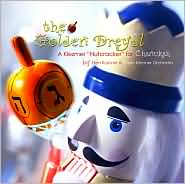
Readers briefly meet Sara, Seth, and their many, many cousins. The "kids" of the family are playing dreydl. Sara is still in a mood. A mood that isn't exactly improved when Tante Miriam shows up with presents for one and all. It's not her fault, mind you, Sara even seems a little inclined to like her present: a golden dreydl. But Seth and her get into a bit of a fight. The dreydl ends up flying through the air and hitting the TV and breaking it. That puts most everyone in a mood.
Readers next join Sara later that evening, for a fantasy adventure. She follows a young girl--a girl claiming to be the Golden Dreydl--through the hole in the TV, I believe. They arrive in a fantasy land, of sorts, with demons, peacocks, a fool, and King Solomon and the Queen of Sheba. There is also much talk of a Tree of Life.
Sara is given a quest, of sorts, to save the girl from the demons/demon king. She has the Fool to help her. A few riddle games are played. First, between Sara and the Fool, and, then later between the Demon King and Sara and the Fool.
For those readers who enjoy fantasy novels, going to different worlds, doing quests, this one is enjoyable enough. If you get a chance to listen to the music, it will probably help you 'enjoy' it even more.
© 2014 Becky Laney of
Becky's Book Reviews
A Quilt for Christmas. Sandra Dallas. 2014. St. Martin's Press. 256 pages. [Source: Library]
For readers who love to read about quilters or quilts, this one may prove satisfying. Also, this one would be a good match for those who like to read about the Civil War. This one is set in Kansas during the last year of the Civil War. I liked Sandra Dallas' A Quilt for Christmas even though I don't consider myself fitting into the ideal audience. (I don't particularly seek out books about quilts. I don't seek out historical fiction set during the Civil War.)
Eliza Spooner is the heroine. She loves, loves, loves to quilt. She loves to get together with other women in the community. The war has had an effect on the community. Many husbands (and brothers, fathers, sons, etc.) are gone, away fighting for one side or the other. Eliza's husband, Will, is fighting for the Union. The novel opens with Eliza finishing a quilt she's made for her husband. She'll be sending the quilt along with a soldier who is returning to her husband's unit from leave. Her love for her husband is obvious, and, not just because she's spent all this time making a quilt. There are dozens of flashbacks. These flashbacks give readers a chance to get to know the couple. However, I must admit that these flashbacks are confusing at times. They are not really set apart in the text, and the transition from present-day to the past can be sloppy at times.
Readers meet Eliza and her son and daughter. Readers meet men and women of the small community as well. Mainly, readers get to know Missouri Ann and her daughter. When Missouri Ann's husband dies, she takes the opportunity to flee from her abusive in-laws. Eliza opens her home to the pair, and this isn't without some risk. Missouri Ann's in-laws are probably without a doubt the meanest and cruelest in the county--if not the state. But not everyone in the community is as immediately open to including Missouri Ann in their group. Her in-laws have tainted her, a bit, no one wants to get close to someone who would marry into that family.
At one point, at a quilting party of sorts, the discussion of slavery and runaway slaves comes up. Opinions are mixed. Prejudices are voiced. Even though most of the women are for the Union--for the Yankees--most if not all have very strong views about blacks.
Eliza's own views will be tested when she's asked to hide a runaway slave: a woman who murdered her mistress. Will she welcome her home to this slave and put her own life and the lives of her children at risk?
A Quilt for Christmas is an odd book at times. It seems to have a handful of plots and stories, any one could be the MAIN one, but really not one seems to stand out as being the one it's all about. It's definitely NOT a plot-driven book. It's mainly about the lives of women in a particular community during the fall of 1864 and throughout 1865.
© 2014 Becky Laney of
Becky's Book Reviews
Brown Girl Dreaming. Jacqueline Woodson. 2014. Nancy Paulsen Books. 336 pages. [Source: Library]
Brown Girl Dreaming is a lovely, often fascinating, memoir written in verse. "Verse novels" can be tricky for me. Sometimes I love them, sometimes I really don't. But in this case, it works well. The writing is just lovely, for the most part. The book is rich in detail capturing what it was like to grow up in Ohio, South Carolina, and New York in the 1960s and 1970s. The people. The places. The sights, sounds, and tastes. The feelings. It's a book that feels personal: an intimate look at family and friends. I very much enjoyed reading it.
Brown Girl Dreaming is a memoir of an author. So it's no big surprise that the focus of this one is on words and stories and reading and writing, of using words and stories to make sense of the world, or, to make a whole new world. But in addition to being about an author's journey, it is a novel about identity as well: who am I, why am I here, what am I supposed to do, etc.
How can I explain to anyone that stories
are like air to me,
I breathe them in and let them out
over and over again. (247)
© 2014 Becky Laney of
Becky's Book Reviews
A Darcy Christmas: A Holiday Tribute to Jane Austen. By Amanda Grange, Carolyn Eberhart, and Sharon Lathan. 2010. Sourcebooks. 304 pages. [Source: Library]
I reread two of the three novellas in
A Darcy Christmas. I reread Amanda Grange's Christmas Present and Carolyn Eberhart's Mr. Darcy's Christmas Carol. I chose not to reread Sharon Lathan's A Darcy Christmas. Each novella was around a hundred pages. A perfect length, in my opinion, for both stories.
Mr. Darcy's Christmas Carol is an interesting and often entertaining read starring Austen's characters and borrowing much from Charles Dickens. The premise is simple yet not completely predictable. Mr. Darcy is oh-so-happy that Bingley and Jane have married. But. He's still alone this holiday season. Unlike the original, he did not propose marriage to Elizabeth soon after Bingley and Jane's happy announcement. Georgiana, his sister, wants a new sister, a new particular sister for Christmas. His cousin has made a similar request, a particular new cousin. It isn't that Darcy doesn't still love her, want her, need her. But he's a bit proud and stubborn. So on the Christmas Eve in question, Darcy is visited by the ghost of his father who warns him of his faults and promises the visits of three spirits in the night. He adds that they will come with familiar faces. (Can you guess which "familiar face" is the ghost of Christmas future?)
I have conflicting thoughts on Mr. Darcy's Christmas Carol. On the one hand, there would be scenes and passages where I'm:
it works, it really works, I can't believe this is working!!! And then perhaps just a page later, I'm:
I take it back, this doesn't work at all, how am I suppose to believe this?! So there were plenty of scenes I liked. I liked how she fit it all together and made it work at least some of the time. It would be hard to fit all the great bits of Pride and Prejudice with all the great bits of A Christmas Carol. So I'm surprised it worked as well as it did actually. I like how one of my favorite scenes of A Christmas Carol is reworked from the beginning to the near-ending. That was something! I don't LOVE this one necessarily. As I mentioned, there are places where it is an almost-but-not-quite. It was a fun idea, perhaps, but not absolutely flawless. I alternated between wanting to shout at the book, and cheering. Still, it's worth reading at least once.
What did I think of Amanda Grange's Christmas Present? I liked it very much!!! I tend to like or love Amanda Grange's Austen adaptations. I think she does a great job with keeping Austen's characters as we know them and love them. She is able to capture the essence of each character. In this novella, readers get a glimpse of their second Christmases. (I believe, the two couples married in November or possibly early December?) Bingley and Jane have a baby. Elizabeth and Darcy are oh-so-close to having a baby as well. But have-her-own-way Elizabeth is insistent that even though she is due to have a baby any day, she is perfectly capable of traveling a few hours by carriage so she can spend the holidays with her family. Darcy gives in, of course. So what does a family Christmas look like? Well, this family Christmas borders on insane! Through half-a-dozen coincidences it seems, that most of the family (minus Georgiana) are brought together to share these few days. Including some you might not be expecting to see: Lady Catherine. Mr. Collins. The novella is comical. It's just a satisfying way to spend an afternoon. Sometimes a good, quick read that is light-hearted fun is just what you need.
This is my final post for "My Year With Jane." Here's a look at all the posts about Jane Austen:
© 2014 Becky Laney of
Becky's Book Reviews
Les Miserables. Victor Hugo. Translated by Isabel Florence Hapgood. 1862/1887. 1232 pages.
This book is a drama, whose leading personage is the Infinite. Man is the second.
I have now read Les Miserables three times. This will be my second review of Les Miserables on my blog. My
first review was in April 2013. I love Les Miserables. I do. I think I love it more each time I read it. The book has depth. The story it tells is memorable and emotional. It is a book you EXPERIENCE. I love so many things about it: the depth and quality of the writing, the characterization, the narration, the themes.
There are many words that could be used to describe Les Miserables: compelling, political, spiritual, philosophical, dramatic, romantic. It is just as concerned about politics and social justice as it is romance and family. It touches on the subjects of education, crime, poverty, and injustice. It's a novel where ideas matter just as much as characters.
It's also a novel heavy on details. When it's good, it's REALLY good. But at times some of the details are too taste-specific. In other words, some of the details weigh the story down. At times Les Miserables is boring. It's worth reading. It is. It's worth pushing through to the end. It's okay to skim certain sections, in my opinion, because it is one of the most satisfying reading experiences overall. Not that I LOVE the ending, though I think I may have made peace with it this time around.
Who are some of the characters? Bishop Myriel, Jean Valjean, Fantine, Inspector Javert, Cosette, Marius, Eponine, Enjolras, Monsieur and Madame Thenardier, Mabeuf, Monsieur Gillenormand, and Gavroche--just to name a few. I don't know if I can say I have a favorite. I know which characters I don't like. But I really just like all of them--no matter their strengths and weaknesses.
Do you have a favorite character? a favorite scene?
One of my favorite scenes is early in the novel when Jean Valjean meets Bishop Myriel (Bienvenu). He is an ex-convict who has just been released. He's seeking a place to stay for the night. It is not going well.
"I have knocked at all doors."
"Well?"
"I have been driven away everywhere."
The "good woman" touched the man's arm, and pointed out to him on the other side of the street a small, low house, which stood beside the Bishop's palace.
"You have knocked at all doors?"
"Yes."
"Have you knocked at that one?"
"No."
"Knock there."
It opened wide with a rapid movement, as though some one had given it an energetic and resolute push.
A man entered.
We already know the man. It was the wayfarer whom we have seen wandering about in search of shelter.
He entered, advanced a step, and halted, leaving the door open behind him. He had his knapsack on his shoulders, his cudgel in his hand, a rough, audacious, weary, and violent expression in his eyes. The fire on the hearth lighted him up. He was hideous. It was a sinister apparition.
Madame Magloire had not even the strength to utter a cry. She trembled, and stood with her mouth wide open.
Mademoiselle Baptistine turned round, beheld the man entering, and half started up in terror; then, turning her head by degrees towards the fireplace again, she began to observe her brother, and her face became once more profoundly calm and serene.
The Bishop fixed a tranquil eye on the man.
As he opened his mouth, doubtless to ask the new-comer what he desired, the man rested both hands on his staff, directed his gaze at the old man and the two women, and without waiting for the Bishop to speak, he said, in a loud voice:—
"See here. My name is Jean Valjean. I am a convict from the galleys. I have passed nineteen years in the galleys. I was liberated four days ago, and am on my way to Pontarlier, which is my destination. I have been walking for four days since I left Toulon. I have travelled a dozen leagues to-day on foot. This evening, when I arrived in these parts, I went to an inn, and they turned me out, because of my yellow passport, which I had shown at the town-hall. I had to do it. I went to an inn. They said to me, 'Be off,' at both places. No one would take me. I went to the prison; the jailer would not admit me. I went into a dog's kennel; the dog bit me and chased me off, as though he had been a man. One would have said that he knew who I was. I went into the fields, intending to sleep in the open air, beneath the stars. There were no stars. I thought it was going to rain, and I re-entered the town, to seek the recess of a doorway. Yonder, in the square, I meant to sleep on a stone bench. A good woman pointed out your house to me, and said to me, 'Knock there!' I have knocked. What is this place? Do you keep an inn? I have money—savings. One hundred and nine francs fifteen sous, which I earned in the galleys by my labor, in the course of nineteen years. I will pay. What is that to me? I have money. I am very weary; twelve leagues on foot; I am very hungry. Are you willing that I should remain?"
"Madame Magloire," said the Bishop, "you will set another place."
The man advanced three paces, and approached the lamp which was on the table. "Stop," he resumed, as though he had not quite understood; "that's not it. Did you hear? I am a galley-slave; a convict. I come from the galleys." He drew from his pocket a large sheet of yellow paper, which he unfolded. "Here's my passport. Yellow, as you see. This serves to expel me from every place where I go. Will you read it? I know how to read. I learned in the galleys. There is a school there for those who choose to learn. Hold, this is what they put on this passport: 'Jean Valjean, discharged convict, native of'—that is nothing to you—'has been nineteen years in the galleys: five years for house-breaking and burglary; fourteen years for having attempted to escape on four occasions. He is a very dangerous man.' There! Every one has cast me out. Are you willing to receive me? Is this an inn? Will you give me something to eat and a bed? Have you a stable?"
"Madame Magloire," said the Bishop, "you will put white sheets on the bed in the alcove." We have already explained the character of the two women's obedience.
Madame Magloire retired to execute these orders.
The Bishop turned to the man.
"Sit down, sir, and warm yourself. We are going to sup in a few moments, and your bed will be prepared while you are supping."
At this point the man suddenly comprehended. The expression of his face, up to that time sombre and harsh, bore the imprint of stupefaction, of doubt, of joy, and became extraordinary. He began stammering like a crazy man:—
"Really? What! You will keep me? You do not drive me forth? A convict! You call me sir! You do not address me as thou? 'Get out of here, you dog!' is what people always say to me. I felt sure that you would expel me, so I told you at once who I am. Oh, what a good woman that was who directed me hither! I am going to sup! A bed with a mattress and sheets, like the rest of the world! a bed! It is nineteen years since I have slept in a bed! You actually do not want me to go! You are good people. Besides, I have money. I will pay well. Pardon me, monsieur the inn-keeper, but what is your name? I will pay anything you ask. You are a fine man. You are an inn-keeper, are you not?"
"I am," replied the Bishop, "a priest who lives here."
"A priest!" said the man. "Oh, what a fine priest! Then you are not going to demand any money of me? You are the cure, are you not? the cure of this big church? Well! I am a fool, truly! I had not perceived your skull-cap."
As he spoke, he deposited his knapsack and his cudgel in a corner, replaced his passport in his pocket, and seated himself. Mademoiselle Baptistine gazed mildly at him. He continued:
"You are humane, Monsieur le Curé; you have not scorned me. A good priest is a very good thing. Then you do not require me to pay?"
"No," said the Bishop; "keep your money. How much have you? Did you not tell me one hundred and nine francs?"
"And fifteen sous," added the man.
"One hundred and nine francs fifteen sous. And how long did it take you to earn that?"
"Nineteen years."
"Nineteen years!"
The Bishop sighed deeply.
The man continued: "I have still the whole of my money. In four days I have spent only twenty-five sous, which I earned by helping unload some wagons at Grasse. Since you are an abbe, I will tell you that we had a chaplain in the galleys. And one day I saw a bishop there. Monseigneur is what they call him. He was the Bishop of Majore at Marseilles. He is the cure who rules over the other cures, you understand. Pardon me, I say that very badly; but it is such a far-off thing to me! You understand what we are! He said mass in the middle of the galleys, on an altar. He had a pointed thing, made of gold, on his head; it glittered in the bright light of midday. We were all ranged in lines on the three sides, with cannons with lighted matches facing us. We could not see very well. He spoke; but he was too far off, and we did not hear. That is what a bishop is like."
While he was speaking, the Bishop had gone and shut the door, which had remained wide open.
Madame Magloire returned. She brought a silver fork and spoon, which she placed on the table.
"Madame Magloire," said the Bishop, "place those things as near the fire as possible." And turning to his guest: "The night wind is harsh on the Alps. You must be cold, sir."
Each time that he uttered the word sir, in his voice which was so gently grave and polished, the man's face lighted up. Monsieur to a convict is like a glass of water to one of the shipwrecked of the Medusa. Ignominy thirsts for consideration.
"This lamp gives a very bad light," said the Bishop.
Madame Magloire understood him, and went to get the two silver candlesticks from the chimney-piece in Monseigneur's bed-chamber, and placed them, lighted, on the table.
"Monsieur le Curé," said the man, "you are good; you do not despise me. You receive me into your house. You light your candles for me. Yet I have not concealed from you whence I come and that I am an unfortunate man."
The Bishop, who was sitting close to him, gently touched his hand. "You could not help telling me who you were. This is not my house; it is the house of Jesus Christ. This door does not demand of him who enters whether he has a name, but whether he has a grief. You suffer, you are hungry and thirsty; you are welcome. And do not thank me; do not say that I receive you in my house. No one is at home here, except the man who needs a refuge. I say to you, who are passing by, that you are much more at home here than I am myself. Everything here is yours. What need have I to know your name? Besides, before you told me you had one which I knew."
The man opened his eyes in astonishment.
"Really? You knew what I was called?"
"Yes," replied the Bishop, "you are called my brother."
"Stop, Monsieur le Curé," exclaimed the man. "I was very hungry when I entered here; but you are so good, that I no longer know what has happened to me."
The Bishop looked at him, and said,—
"You have suffered much?"
"Oh, the red coat, the ball on the ankle, a plank to sleep on, heat, cold, toil, the convicts, the thrashings, the double chain for nothing, the cell for one word; even sick and in bed, still the chain! Dogs, dogs are happier! Nineteen years! I am forty-six. Now there is the yellow passport. That is what it is like."
"Yes," resumed the Bishop, "you have come from a very sad place. Listen. There will be more joy in heaven over the tear-bathed face of a repentant sinner than over the white robes of a hundred just men. If you emerge from that sad place with thoughts of hatred and of wrath against mankind, you are deserving of pity; if you emerge with thoughts of good-will and of peace, you are more worthy than any one of us."
This meeting will change his life. The impact of the Bishop on Jean Valjean is huge. And this scene is just the beginning.
In writing this review, I discovered two books releasing in 2015, that I really, really WANT to review--
NEED to review. Both are February releases. Candlewick Press is releasing Marcia Williams' retelling of Les Miserables. Penguin is releasing a NEW translation of Les Miserables by Christine Donougher.
I could not possibly share every quote I loved from the book. There are hundreds. But I will share some with you.
Favorite quotes:
True or false, that which is said of men often occupies as important a place in their lives, and above all in their destinies, as that which they do.
"Jean Valjean, my brother, you no longer belong to evil, but to good. It is your soul that I buy from you; I withdraw it from black thoughts and the spirit of perdition, and I give it to God."
Teach those who are ignorant as many things as possible; society is culpable, in that it does not afford instruction gratis; it is responsible for the night which it produces. This soul is full of shadow; sin is therein committed. The guilty one is not the person who has committed the sin, but the person who has created the shadow.
The supreme happiness of life consists in the conviction that one is loved; loved for one's own sake—let us say rather, loved in spite of one's self.
To make the poem of the human conscience, were it only with reference to a single man, were it only in connection with the basest of men, would be to blend all epics into one superior and definitive epic.
Diamonds are found only in the dark places of the earth; truths are found only in the depths of thought. It seemed to him, that, after having descended into these depths, after having long groped among the darkest of these shadows, he had at last found one of these diamonds, one of these truths, and that he now held it in his hand, and he was dazzled as he gazed upon it.
If you wish to gain an idea of what revolution is, call it Progress; and if you wish to acquire an idea of the nature of progress, call it To-morrow. To-morrow fulfils its work irresistibly, and it is already fulfilling it to-day. It always reaches its goal strangely.
Man lives by affirmation even more than by bread.
Peace is happiness digesting.
The bourgeoisie is simply the contented portion of the people. The bourgeois is the man who now has time to sit down. A chair is not a caste.
True history being a mixture of all things, the true historian mingles in everything.
Of all the things that God has made, the human heart is the one which sheds the most light, alas! and the most darkness.
A compliment is something like a kiss through a veil.
Civil war—what does that mean? Is there a foreign war? Is not all war between men, war between brothers? War is qualified only by its object. There is no such thing as foreign or civil war; there is only just and unjust war.
The right to the alphabet, that is where the beginning must be made. The primary school imposed on all, the secondary school offered to all, that is the law. From an identical school, an identical society will spring. Yes, instruction! light! light! everything comes from light, and to it everything returns. Citizens, the nineteenth century is great, but the twentieth century will be happy.
Everything can be parodied, even parody.
He sleeps. Although his fate was very strange, he lived. He died when he had no longer his angel. The thing came to pass simply, of itself, as the night comes when day is gone.
© 2014 Becky Laney of
Becky's Book Reviews
Jane Austen's First Love. Syrie James. 2014. Berkley Trade. 400 pages. [Source: Review copy]
I enjoyed reading Jane Austen's First Love. I admit I had my doubts at the beginning. On the one hand, after being so disappointed in Becoming Jane, I was hesitant to read anything giving Jane Austen a romance of her own. Also I wasn't wowed by The Lost Memoirs of Jane Austen. On the other hand, several people I respect really did love Jane Austen's First Love. While I can't say that I loved, loved, LOVED Jane Austen's First Love, I did really enjoy it. More than I thought I would at any rate.
1791. Summer of 1791. Jane and Cassandra travel to meet their brother Edward's fiancee, Elizabeth Bridges, and her family. (Several other family members go as well. The mother, but, not the father. Another brother, Charles, I believe. But the focus is mostly on Jane and Cassandra). Jane is just fifteen, she's not "out" yet. Her sister is a year or two older and is. Part of what makes this trip special, is that Jane is to be allowed certain privileges. She'll be allowed to go to dances and balls. She'll be allowed to powder her hair, etc. Most--if not all--the events will be family and friends. (Bringing together multiple families. Several of the Bridges' sisters are engaged to be married. All the engagements are being celebrated. There will be plenty of people there.)
On their trip, they happen to meet--quite dramatically--a young man named Edward Taylor. (He happens to be a neighbor, I believe.) Jane becomes smitten with him. He enjoys being with her, but, there aren't any OBVIOUS signs that he's madly, deeply in forever-and-ever-love with her. She may hope that he is "the one." But he is sixteen and not anywhere close to proposing marriage to anyone, no matter how lively, witty, charming, talented, beautiful, etc. Does Jane hope he is the one? The fictional, Jane, I mean? Perhaps. Perhaps not. Without a doubt, Jane enjoys herself tremendously, and finds time with him thrilling.
Strawberry picking. Dances. Dinners. Walks. Riding horses. Play acting. Matchmaking. Such is the stuff of Jane Austen's First Love.
One of the main plots surrounds the Bridges' sisters: Fanny, Elizabeth, and Sophia. They are all older than Jane. They are all of the courting age. Elizabeth and Fanny are engaged. Sophia is close to an engagement as well. Jane is watching; watching carefully, closely, analyzing and taking notes. Jane's observations lead her to believe that the sisters are mismatched! Readers meet a young Jane, an opinionated Jane, who is enjoying the idea of love, of falling in love, of finding love. What does she know of LOVE? What does she know of what makes two people compatible? It's interesting!
I also enjoyed how readers get a behind-the-scenes glimpse of Jane writing
The Three Sisters. I would say that readers should take the time to read this little story on their own before, during, or after the novel.
© 2014 Becky Laney of
Becky's Book Reviews
The 5th Wave. Rick Yancey. 2013. Penguin. 457 pages. [Source: Review copy]
Why reread
The 5th Wave? Well, I wanted to reread The 5th Wave before beginning the second book in the series, The Infinite Sea. Also, it made sense to reread it for the Sci-Fi Experience!!!
If you're considering reading it for yourself in the near future, you might want to skip this review. Not because I'm planning on including spoilers. I'm not. But because some books should just be experienced as they are--no expectations, no hype.
So what is it about? Alien invasion. Humanity's fight to survive. It's a sci-fi thriller. It's intense and action-packed. Yet not without heart and soul and substance. It's action-packed and emotional. (Not always easy to balance the two to every reader's satisfaction.)
What else should you expect? Well. It's told through multiple narrators. Cassie, "Zombie," and "Nugget" to name a few. Normally this tends to irritate me. But I actually really enjoyed it in The 5th Wave. Yes, it was a bit disconcerting the first transition or two. But overall, it adds to the suspense and tension. The novel is better because of it.
Choices. To trust or not to trust. That is what The 5th Wave is about. Human survivors forced into difficult situations. Should they trust any survivor they come across? Should they assume the worst, and kill before they can be killed. Kill without question, without thinking, no exceptions. Or should they risk their own lives by clinging to hope that their are other survivors out there--survivors that are very much still human? Misplaced trust could prove deadly after all. But becoming a killer robs you of who you
were.This is what the Others have done to us. You can't band together to fight without trust. And without trust, there was no hope. How do you rid the Earth of humans? Rid the humans of their humanity.
© 2014 Becky Laney of
Becky's Book Reviews
Where The Heart Is. Billie Letts. 1995. 376 pages. [Source: Bought]
The novel opens circa 1985. Novalee Nation, the heroine, is seven months pregnant. She is with her boyfriend, and they're both heading west. He's a man without integrity, to say the least. He does reluctantly give her a ten dollar bill so she can go buy some shoes when her own shoes are lost through the hole in the floor of his car. But he expects a good bit of change back. Or does he? Was he planning to abandon her at the Walmart all along? Or did he just get tired of waiting? Does it matter? The truth is that Novalee Nation is left at a Walmart in a small town in Oklahoma with only $7.77. She has no family to call, no friends either. So Novalee settles down in Walmart for the rest of her pregnancy, hiding when need be, so no one knows that she is living there. She ventures out during the day and meets people, meets the librarian, for example. By the end of her pregnancy, she's made a few friends. Now these new friends of hers don't know the truth exactly. But they're not the type of people who would care overly much about the truth. Novalee happens to find herself among the least judgmental folks she's ever met. The book spans seven years worth of drama. If the book has a theme it is one of 'home' and 'belonging' and 'family.'
Where the Heart Is was not a good match for me. I wanted a different book, perhaps. A book that kept the "down-to-earth" quirky characters perhaps, but, lost much of the smut. It isn't that Where the Heart Is is your traditional smutty romance--it isn't, far from it. But I thought there were certainly plenty of details that were tasteless. Why did readers need to follow Willy Jack's story at all???? Every chapter that focused on Willy Jack seemed tasteless and pointless. Why do we need to know about his time in prison? If the story had centered exclusively on Novalee Nation, would I have liked it a bit more? I think I would have. At least I wouldn't have hated it. Eliminating Willy Jack wouldn't have solved all the problems, one scene that was too much to take, and rightly so, was the child rape. The scene had every right to be disturbing. It was a horrible awful situation. Still. The details were too much. The profanity--the blasphemy--was also too much. © 2014 Becky Laney of
Becky's Book Reviews
Palace of Spies. Sarah Zettel. 2013. Houghton Mifflin Harcourt. 368 pages. [Source: Library]
Peggy Fitzroy lives with her aunt, uncle, and cousin. She knows she's not wanted, her aunt and uncle have made that clear. But she gets along quite well with her cousin, Olivia. The novel opens with Peggy in a difficult position. Her uncle has arranged a marriage for her. She's not thrilled instead more than a little hesitant. Her hesitation only increases AFTER she meets him at a ball. Her intended isn't the only person she meets there, however. One other mystery man makes her acquaintance. He offers her a way out. He tells her that he knew her mother. He wants to make a deal with her, of sorts. He wants her to spy for him, to impersonate one of the Queen's maids. (Ladies-in-waiting?) He leaves her with his card. She's curious but just as hesitant about that option as well. If only she could have some control over her own future...
With a title like Palace of Spies, it's obvious what her choice was. She will become Lady Francesca Wallingham. Can she learn enough from Mr. Tinderflint and Mr. Peele? Do they know enough about her to tell her everything she needs to know to pass as this lady? Is either man trustworthy? What are their intentions? What will they do with the information she provides? Who can she trust at court? Did Lady Francesca have enemies? How will she be able to discern who her friends were and who her enemies were? Will she fool anyone? Will she fool everyone? Will she ever get a minute to call her own? How long will this deception last?
I enjoyed this one. I think I enjoyed it even more having read Lucy Worsley's
The Courtiers: Splendor and Intrigue in the Georgian Court at Kensington Palace earlier this year. I was familiar with several of the characters. It was quite entertaining with a nice balance of danger and romance.
© 2014 Becky Laney of
Becky's Book Reviews
The Plantagenets. Dan Jones. 2013. Viking. 560 pages. [Source: Library]
I enjoyed reading this overview of British history. The book examines the reigns of a handful of Plantagenet kings: Henry II, Richard I, John, Henry III, Edward I, Edward II, Edward III, and Richard II. It spans several centuries: 1120-1399. It also overlaps a bit with French history.
The book opens with "The White Ship." It's a dramatic way to start a book. Henry I, the son of William the Conqueror, loses his son and heir in a shipwreck. Henry I has two dozen illegitimate children--give or take one or two. But his only legitimate child is a daughter, Matilda. He remarries hoping presumably to have another child--a son, a new heir. But that is not to be. He marries the widowed Matilda off--it was anything but a love match--and she starts having children of her own, many of them sons. He leaves his kingdom to his daughter, supposedly everyone has sworn their allegiance to her, but, in reality, she's never in a position to reign as queen. Her cousin, Stephen, reigns instead. War follows, naturally. It is not a short war, a quick and decisive war. It is a here and there, on-and-off again war where the people suffer for the family squabble most. Eventually, an agreement of sorts is reached, Stephen will pass the crown to Matilda's son, Henry II. He is the first Plantagenet king. Henry II, if you remember, is married to Eleanor of Aquitaine, the former French queen as well. They have many children together...
The book follows the reigns of each king. It goes into detail with politics and economics. It goes into detail with the struggles of each king. Their strengths and weaknesses, their battles. Sometimes these battles are with the church; sometimes these battles are with the French; sometimes these battles are with the Irish or the Welsh or the Scottish; sometimes these battles are with their own flesh and blood, their family; sometimes these battles are with their own countrymen, the barons, the nobility, or even the peasants. No one king has it all. No one king has a perfect, problem-free reign. It wouldn't necessarily be fair or right to sort the kings into two groups of "good" and "bad." Some kings had a reputation of being horrible, and yet they didn't do anything over and above what other kings before them or after them did. Writers of all centuries can label kings this or that, but, that is because historians can be biased. (Some are openly biased. Some not so much.)
As for the details about each king, what can I say? It's an overview, a detailed overview, to be sure. Some readers may be more of an expert and find fault with statements here and there throughout the book. They may spot myths presented as fact. But I certainly can't be among them. I don't know enough about each and every king.
I found the book to be interesting. Some chapters were more fascinating than others. Some chapters even seemed a bit confusing. But I kept reading.
© 2014 Becky Laney of
Becky's Book Reviews
My New Friend Is So Fun! Mo Willems. 2014. Hyperion. 60 pages. [Source: Library] I love Gerald. I love Piggie. I love Mo Willems. This is the twenty-first book starring Piggie and Gerald. I did enjoy it. How could I not enjoy it? I couldn't imagine not loving a book starring my favorite pig and favorite elephant.
In this addition to the series, Piggie becomes friends with Brian Bat, and Gerald becomes friends with Snake. Gerald and Snake are talking. They become worried, very, very worried. The more they talk, the more they think, the more they think, the more anxious and excited they become. What if Piggie becomes BEST, BEST friends with Brian?! What if Brian the Bat doesn't *need* Snake anymore?! What if Piggie doesn't *need* Gerald anymore?! What if Piggie decides that it is more fun to spend time with Brian?! Gerald and Snake would be doomed if that happened. They can't let that happen. They just can't. So they go to confront Piggie and Brian....
Will Gerald and Piggie stay best, best friends?
This one is cute enough. Of course, Gerald has nothing to worry about. Piggie is loyal through and through. (As is Brian the Bat.)
Waiting is Not Easy. Mo Willems. 2014. Hyperion. 64 pages. [Source: Library]Note: This one will be Cybils eligible next year! Don't forget!
Did I love the twenty-second Elephant & Piggie book? I did! You know I did! I adore Gerald and Piggie!!!
In this addition to the series, Piggie has a surprise for Gerald. But it is a surprise that can't be given or shared right away. Which means that both Gerald and Piggie have to wait...and wait...and wait. Piggie, at least, knows why. But Gerald, well, he doesn't. And the suspense is torture for this oh-so-emotional elephant!
What I love best about the series is the expressiveness of the illustrations. Spotlight on Gerald!!! I love watching his expressions on every page of Waiting Is Not Easy. I think my favorite is Gerald's groaning. (p. 20/21, 30/31, 38/39).
The story is fun and playful. It is oh-so-easy to relate to Gerald's impatience and frustration!
© 2014 Becky Laney of
Becky's Book Reviews

By:
Becky Laney,
on 12/7/2014
Blog:
Becky's Book Reviews
(
Login to Add to MyJacketFlap)
JacketFlap tags:
books reviewed in 2014,
picture books,
2007,
1938,
children's classic,
1961,
1998,
1905,
1939,
1987,
library book,
1989,
1985,
1903,
1960,
Add a tag
Rudolph the Red-Nosed Reindeer. Robert Lewis May. Illustrated by Denver Gillen. 1939/1990. Applewood Books. 32 pages. [Source: Library]I enjoyed this one more than I thought I would. This is the original story by Robert L. May with the original illustrations by Denver Gillen. It is so different from the song and the stop-motion animated special. And I think it was the fact that it was different that made me appreciate it more.
The story is told in rhyme. It's essentially one long (perhaps poorly punctuated) poem. Here's how it begins:
Twas the day before Christmas, and all through the hills
The reindeer were playing…enjoying the spills
Of skating and coasting, and climbing the willows…
And hop-scotch and leap-frog (protected by pillows!)
While every so often they'd stop to call names
At one little deer not allowed in their games:--
"Ha ha! Look at Rudolph! His nose is a sight!"
"It's red as a beet!" "Twice as big!" "Twice as bright!"
While Rudolph just wept.
What else could he do?
He knew that the things
they were saying were true!
Readers first meet Rudolph, a young deer who is teased by his peers. He does NOT live at the North Pole. And he's not one of Santa's own reindeer.
What we do learn is that he's a very good, very obedient deer who is expecting Santa to leave him some lovely presents because he's been so very, very good.
Readers then meet Santa and learn of the horrible weather conditions that prove most challenging. Santa starts out on his trip, it isn't until he's delivering presents to Rudolph's house that he notices the brilliant light of his nose.
Santa then decides to wake him up and ask for his help. The rest of the journey goes much easier for Santa!
The book concludes with Santa returning Rudolph to his family, to his hometown. He is now a hero, of course.
I liked this one. I liked some of the rhymes more than others. There are definitely some quirky lines!
Come Dasher! Come Dancer! Come Prancer and Vixen!
Come Comet! Come Cupid! Come Donner and Blitzen!
Be quick with your suppers! Get hitched in a hurry!
You, too, will find fog a delay and a worry!"
And Santa was right. (As he usually is!)
The fog was as thick as a soda's white fizz.
The book is definitely text-heavy. So a longer attention span would be needed for little ones to enjoy this one.
The copy I read was a facsimile edition. A 75th Anniversary edition with new illustrations was released in September 2014.
On Christmas Eve. Margaret Wise Brown. Illustrated by Nancy Edwards Calder. 1938/1961/1996. HarperCollins. 32 pages. [Source: Library]It was the middle of the night. And night of all nights it was Christmas. I enjoyed Margaret Wise Brown's On Christmas Eve. It is a descriptive look at what Christmas--at what Christmas Eve--is like for children. It focuses on simple things: what your eyes see, what your ears hear, what your nose smells, what your hands and feet touch. It seeks to capture the emotion of the holiday: the excitement, the waiting, the longing.
Lots of details, lots of adjectives. It's rich in imagery and description. There is also a bit of repetition. The text is lyrical in places.
I can't say that I loved it. But it was very enjoyable. I was also glad to see that one of the presents under the tree was a train. The children are just in awe of the magic of Christmas, of the stockings and packages, of the snow falling outside, of the carolers outside.
It was a sweet story about three siblings.
Silver Packages: An Appalachian Christmas Story. Cynthia Rylant. Illustrated by Chris K. Soentpiet. 1987. Scholastic. 32 pages. [Source: Library] Silver Packages is a picture book for older readers most likely. I wouldn't say it is for an exclusively adult audience. But I think readers need some perspective in order to appreciate the book fully. I think it can resonate with readers, it has the potential. But I don't think the emotional reaction would be--or even should be--automatic. One can't assume that every reader will respond with tears and "this is the best book I've ever read!!!"
Silver Packages is about giving back to the community. In this instance, one very specific community--Appalachia. The book is about the Christmas Train. It starts with one man who wants to show his appreciation for the community that helped him when he needed it. He was injured in an accident, the community took in this stranger and nursed him back to health without asking for anything in return. He decides that he will come every year--by train--and hand out packages to the children who meet the train. These packages are wrapped in silver paper. Every story needs a protagonist. Silver Packages introduces us to Frankie. Readers first meet Frankie as a boy. He's a boy with a dream. He wants to be a doctor. And he really, really, really wants a doctor kit for Christmas. But each year, he's slightly disappointed. He receives a handful of silver packages through the years. Every gift seems to have a toy--something a boy or girl might want--and something a boy or girl might need. The practical gifts include: socks, mittens, hats, scarves, etc. Readers later see Frankie all grown up. He is a doctor. He reflects on his life, on his past Christmases, he has a light-bulb moment. He decides it is his turn to give back to the community in his own special way. It's a book about kindness and gratefulness and community awareness.
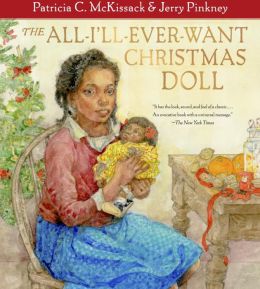
I haven't read The All-I'll-Ever Want-Christmas Doll in years. It was just as good as I remembered. The book is set during the Depression. A little girl, Nella, knows that her family is poor, that Santy may not come this year at all. Yet, she can't resist writing to him all the same begging for a Baby Betty doll. Her two sisters perhaps think a little less of Nella for her dreaming so big. She shouldn't expect so much from Christmas. But on Christmas morning, there are a few surprises. Each girl gets a Christmas sack filled with walnuts, peppermint candy, an orange, and a box of raisins. But there is one present, one special present remaining: a doll. Nella thinks the doll should be HERS and hers alone. After all, her sisters haven't gone around talking about the doll nonstop, her sisters didn't write Santa a letter begging for the doll. Why should she have to share the doll with them? But does the doll make her happy? Is the doll truly all she'll ever want? She has a few lessons to learn for sure!
I really enjoyed the story and the message.
The Bells of Christmas. Virginia Hamilton. Illustrated by Lambert Davis. 1989/1997. Houghton Mifflin Harcourt. 64 pages. [Source: Library] I didn't dislike Virginia Hamilton's The Bells of Christmas. But I didn't love, love, love it either. I think it depends on what exactly you're expecting from a Christmas book. The Bells of Christmas is very much a celebration of a Christmas long ago. Christmas 1890. Readers meet a young boy, Jason Bell, and experience the holiday through his perspective. We learn about his mom and dad, his brothers and sisters, his cousins, his aunt and uncle, his friend, Matthew. The book is set over a period of several days. Among the things readers learn that Jason's dad is a carpenter, that he wants his sons to join him in his business one day, his dad has only one leg, that his dad wears a peg leg part of the time and is in his wheel chair the rest of the time. Readers also learn that Jason is just a wee bit obsessed with wheels--mainly trains, but, also wagons, etc. The book has plenty of detail and characterization which is a good thing. Jason is waiting for quite a few things: 1) he can't wait for Christmas morning and presents! 2) he can't wait for the Bells to arrive--his uncle and aunt and cousins, 3) he is excited about church, most everyone is performing and participating in some way. (Jason is singing a solo.) The book perhaps seeks to capture one Christmas for one extended family. It is a pleasant, enjoyable book. It isn't quite a chapter book or novel. It isn't quite a picture book.
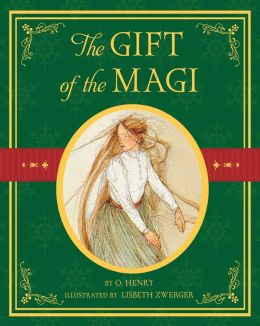
I've seen adaptations of The Gift of the Magi--who hasn't? (My favorite is Bert and Ernie and Mr. Hooper.) But this is the first time I've read the actual short story. I haven't decided how I feel about it. Is this couple wise or foolish? Or are they at times foolish and at times wise?
The wife, Della, takes extraordinary pride in her long hair. She doesn't seem the vain sort except for when it comes to her hair. And even if she is vain about it, there's no indication it's anything besides a private vanity. The wife apparently has been coveting expensive hair combs as well. The husband, Jim, takes extraordinary pride in the family watch. The narrator uses exaggeration when discussing the woman's long hair and the man's gold watch. I didn't love the narrator. In fact, I think the narrator is a distraction. He won't let the reader forget for a moment that this is a precious story.
Now, there were two possessions of the James Dillingham Youngs in which they both took a mighty pride. One was Jim's gold watch that had been his father's and his grandfather's. The other was Della's hair. Had the queen of Sheba lived in the flat across the airshaft, Della would have let her hair hang out the window some day to dry just to depreciate Her Majesty's jewels and gifts. Had King Solomon been the janitor, with all his treasures piled up in the basement, Jim would have pulled out his watch every time he passed, just to see him pluck at his beard from envy.
The wife can't afford a gift for her husband. The husband can't afford a gift the wife. The wife knows this--or should know this. The husband knows this--or should know this. The wife has saved $1.87. The husband might have saved a small sum as well. Readers don't know one way or the other. Both husband and wife will have something to offer the other, however. Something more than love. For both have decided--quite independently--to give sacrificially. To give up what they supposedly value most: her hair, his watch. And this giving up wasn't to support the family, but, to support the other's vanity.
I think actions can speak more than words. I think the narration took away some of my enjoyment of this one. It felt odd at times. There were sentences that were eloquent and refined and then it would slip into something else.
"It's sold, I tell you--sold and gone, too. It's Christmas Eve, boy. Be good to me, for it went for you. Maybe the hairs of my head were numbered," she went on with sudden serious sweetness, "but nobody could ever count my love for you. Shall I put the chops on, Jim?"
I think I like the adaptations better.
The Tailor of Gloucester. Beatrix Potter. 1903. 58 pages. [Source: Library] In the time of swords and periwigs and full-skirted coats with flowered lappets—when gentlemen wore ruffles, and gold-laced waistcoats of paduasoy and taffeta—there lived a tailor in Gloucester.
He sat in the window of a little shop in Westgate Street, cross-legged on a table, from morning till dark.
All day long while the light lasted he sewed and snippeted, piecing out his satin and pompadour, and lutestring; stuffs had strange names, and were very expensive in the days of the Tailor of Gloucester.
I enjoyed rereading Beatrix Potter's The Tailor of Glouchester. In this delightful Christmas tale, readers meet a tailor, a cat named Simpkin, and some lovely mice. It is several days before Christmas. He's working hard to finish a coat and waistcoat for the Mayor of Glouchester. The Mayor is getting married on Christmas day. The tailor has just enough money to finish the coat. Not a penny to spare. He sends his cat, Simpkin, with his money to buy what he needs: a little for himself (food: bread, sausage, milk) a little for his work (one twist of cherry-coloured silk). It is only after the fact that he questions whether he should have sent the cat or gone himself. The cat returns, but, in a mood. The cat is upset for he's discovered that the tailor freed the mice he had captured and hid under the teacups. The cat hides the twist. The man is upset, of course, and sick. He takes to his bed unable to work. The oh-so-thankful mice go to his shop and finish his work for him. But since they are one twist short, they are unable to finish completely. Still, they do what they can, and they do a wonderful job. The cat who spies them at work, I believe, has a change of heart and gives the twist to the old man on Christmas morning. He has just enough time to finish. The Mayor is very, very pleased. And the tailor's luck changes for the better, and his business is much improved. This one is a lovely, delightful read from start to finish.

I enjoyed reading Lucy's Christmas by Donald Hall. Lucy's Christmas is a picture book set in 1909 in New Hampshire. In the fall of 1909, Lucy and her family start preparing for Christmas. For Lucy, this means starting to make her own gifts for her family and friends. It pays to plan ahead since so many gifts take time, and thought must be placed into each gift. She's not the only one thinking ahead. This year the family is ordering a new stove for the kitchen. The family has spent a lot of time browsing in the Sears catalog. Lucy's choice is the one the family decides upon: the Glenwood Kitchen Range. The focus is not just on gifts: planning, making, giving, receiving. The focus is also on family life and community life. Readers get glimpses of the school and church. Both places are very busy! I enjoyed this glimpse into the past! It was interesting to see the family prepare for the new year--1910. The enthusiasm in the story is sweet. The author's note reveals that this picture book is based on family history.
I really liked this one very much. I liked Lucy and her family. I liked the fact that the church plays such a HUGE role in the Christmas celebrations. There are gifts, it's true. But it's not commercialized and selfish.
Baboushka and the Three Kings. Ruth Robbins. Illustrated by Nicholas Sidjakov. 1960/1986. Houghton Mifflin Harcourt. 32 pages. [Source: Library]Long ago and far away, on a winter's evening, the wind blew hard and cold around a small hut. Baboushka and the Three Kings won the Caldecott Medal in 1961. It is Russian folktale with a Christmas setting. The three kings--wise men--come to Baboushka's hut. They only stay a few minutes. Long enough to extend an invitation to the old woman. Will she join them in their procession, in their quest, to find the Babe, the Child? She'd love to join them, she'd love to bring gifts to the Child. But she is not ready to go just yet. Couldn't they all wait until morning? Couldn't they wait for her to finish up a few small, tiny chores first? Couldn't they wait for the storm to clear? Their answer was firm. Their journey to the Child was too important to postpone. They couldn't linger longer. She watched them depart. But they were not easy men to forget. The next morning, she begins a journey of her own. A journey that will take her far. But will her journey lead her to where she wants to go?
It's a simple story, nicely written. "It is no ordinary Babe they seek. Yes! I must go and follow them! To find the new Babe, to offer Him her gift, was now her one yearning. This thought burned in her mind like a candle in the dark." It is also nicely illustrated. The illustrations complement the text well. Both illustrations and text have a different flavor, an authentic flavor, but not exactly American. After several readings, I came to appreciate both a bit more.
In case you're unfamiliar with the story, the book is bittersweet at best. While it is true that Russian children everywhere look forward to Baboushka's gifts each year as her journey continues, it is also true that Baboushka's journey has no happy ending. She never finds the Child. She is never able to give Him her gifts.
Polar Express. Chris Van Allsburg. 1985/2009. Houghton Mifflin Harcourt. 32 pages. [Source: Library] The Polar Express is one of my favorite Christmas books. It is. The book is a thousand times better than the movie. (Though the soundtrack of the movie isn't bad.) So if you've only seen the movie, you might want to give the book a try to. You might have a different response to it.
The Polar Express is about belief and doubt--in Santa. It's told in the first person, so we never learn the protagonist's name, but it is a little boy with a younger sister named Sarah. One Christmas Eve, the little boy is awakened by The Polar Express. He goes to the North Pole on the Polar Express train, there are other passengers too. All presumably boys and girls on the verge of not-believing. At the North Pole, he sees Santa, reindeer, and elves. He happens to be chosen to receive the first gift of Christmas. He asks for a bell from Santa's reindeer. This gift is not in his possession for long, however, because he has a hole in his pocket. On Christmas day, he receives a special gift under the tree: the bell he had lost. He can hear it. His sister can hear it. But his parents do not. The book ends wonderfully with a message for "all those who truly believe."
I loved this one cover to cover, though I love the ending most of all. © 2014 Becky Laney of
Becky's Book Reviews
View Next 25 Posts




